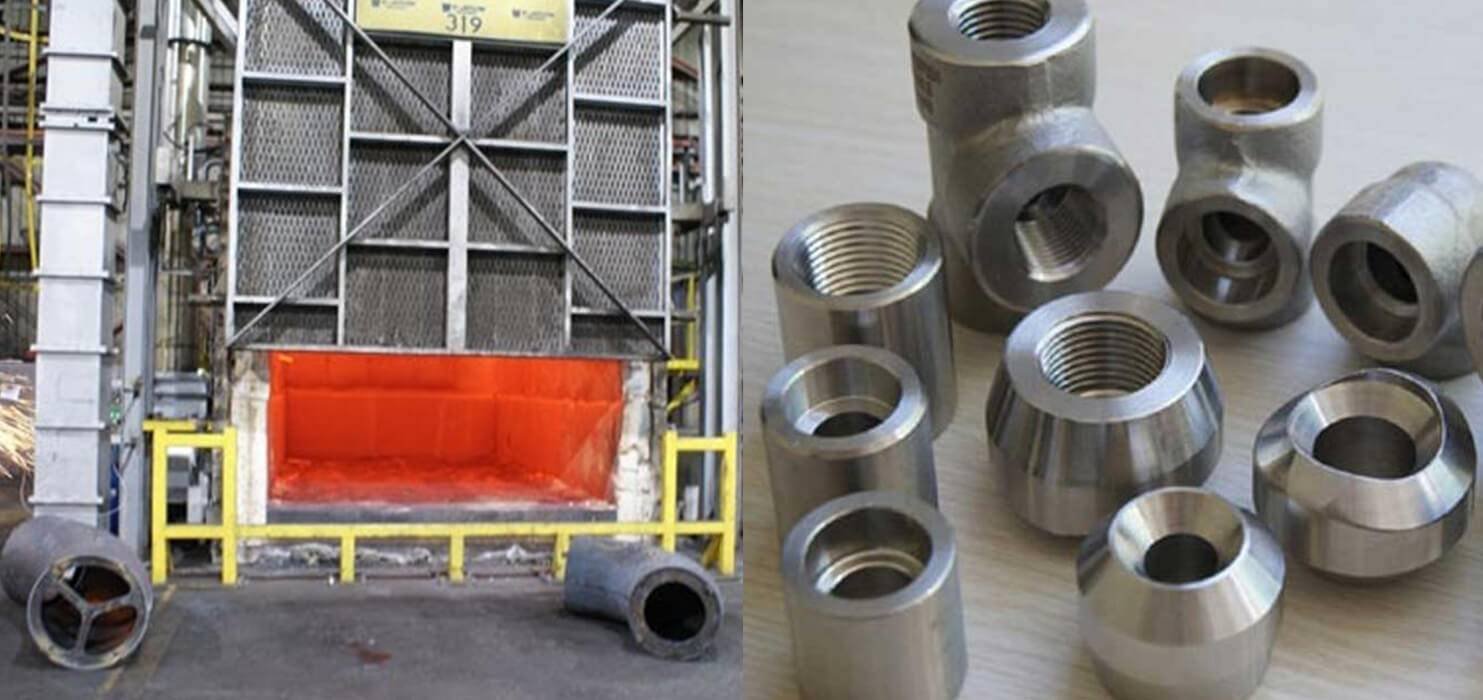In the world of industrial engineering, materials are constantly pushed to their limits. In offshore oil rigs, chemical processing plants, and marine vessels, standard materials like carbon steel and even some stainless steels simply cannot withstand the harsh combination of high pressure, extreme temperatures, and severe corrosive attack. When a system failure is not an option, engineers turn to a class of high-performance “superalloys.”
Among the most trusted and versatile in this group is Monel. This family of nickel-copper alloys is a true workhorse, renowned for its toughness and exceptional resistance to a wide range of corrosive environments.
But the alloy itself is only half the story. For piping systems, the integrity of the connections is paramount. This is where forged fittings come in. A forged Monel fitting—whether it’s an elbow, tee, or coupling—represents the peak of reliability. This article explores the unique composition, properties, and critical industrial applications of these high-performance components.
Understanding Monel: The Nickel-Copper Powerhouse
Monel is not a single material but a family of alloys, primarily composed of nickel (typically 60-70%) and copper. These elements are fully dissolved in one another, creating a “solid-solution” alloy that is stronger and more robust than its individual components.
This combination gives Monel its signature properties, particularly its famous resistance to corrosion from seawater, acids, and alkalis. Forged fittings, such as those covered under the ASTM B564 specification, are most commonly made from two primary grades: Monel 400 and Monel K500.
Monel 400 (UNS N04400)
This is the “workhorse” grade and the most widely used. Its composition is roughly 63% nickel, 28-34% copper, along with small amounts of iron and manganese.
Monel K500 (UNS N05500)
This is the “high-strength” grade. It has a similar nickel-copper base as 400 but with one critical difference: the addition of small amounts of aluminum (Al) and titanium (Ti).
These additions are its superpower. They make Monel K500 “precipitation-hardenable” (or age-hardenable). This means that after manufacturing, the fitting can be heat-treated, causing microscopic precipitates to form within the metal’s structure. These precipitates act like reinforcing bars, dramatically increasing the material’s strength and hardness. The result is a fitting that has the excellent corrosion resistance of Monel 400 but with double or even triple the yield strength.
The “Forged” Advantage: Why Manufacturing Matters
Why is the “forged” part of the name so important? Fittings can be made in several ways, including casting (pouring liquid metal into a mold) or welding (fabricating from pieces). Forging is a different process entirely, and it creates a demonstrably superior product for high-pressure applications.
Forging involves taking a solid piece of Monel, heating it to a malleable temperature, and then shaping it under immense, localized pressure using a press or a hammer.
This process offers three key advantages:
- Refined Grain Structure: The intense pressure of forging refines the internal grain structure of the metal, making it fine and uniform.
- Continuous Grain Flow: More importantly, the forging process directs the grain flow of the metal to follow the shape of the fitting. In an elbow, for example, the grain structure “turns the corner” with the part. This makes it incredibly strong and resistant to mechanical shock and fatigue, much like how the grain in a solid piece of wood makes it strong.
- Elimination of Defects: Forging eliminates the internal defects—like porosity, shrinkage, or cavities—that can sometimes be found in cast parts. It also eliminates the weld seams that are inherent weak points in fabricated parts.
For a high-pressure, high-stress, or hazardous-service piping system, the structural integrity of a forged fitting is second to none.
Key Properties and Benefits
The combination of Monel’s chemistry and the forging process results in fittings with a powerful set of benefits.
1. Exceptional Corrosion Resistance
This is Monel’s primary claim to fame.
- Seawater: Monel 400 is famous for its outstanding resistance to flowing seawater and brackish water. It is highly resistant to pitting and crevice corrosion, which is why it is a default choice for marine engineering.
- Alkalis: It has excellent resistance to attack from many caustic (alkaline) solutions.
2. High Strength and Toughness
Both Monel 400 and K500 are inherently stronger than many stainless steels. The forging process enhances this strength, making them ideal for high-pressure systems. Monel K500 takes this a step further, with strength properties that approach those of high-end alloy steels.
3. High and Low-Temperature Performance
Monel is not just for ambient temperatures.
- High Temperatures: It retains a significant portion of its strength at elevated temperatures, making it suitable for steam lines, boiler feedwater heaters, and other high-temperature processing.
- Cryogenic Temperatures: This is a key advantage. Unlike carbon steel, which becomes brittle at low temperatures, Monel remains tough and ductile even at cryogenic temperatures (down to -253°C / -423°F), making it an excellent choice for liquefied natural gas (LNG) applications.
4. Non-Sparking and Non-Magnetic (Monel K500)
When Monel K500 is age-hardened, it remains non-magnetic even at very low temperatures. This, combined with its non-sparking properties, makes it a critical safety material. In an oil and gas facility or a chemical plant with flammable gases, a spark from a dropped tool or component could be catastrophic. Using Monel K500 components helps mitigate this risk.
Where is Monel Forged Fittings Used?
Given their unique properties, Monel fittings are specified for the most challenging jobs in the world’s most demanding industries.
- Marine and Shipbuilding: This is the classic application for Monel 400.
- Chemical Processing: Monel is the go-to material for plants handling hydrofluoric acid (a key catalyst in alkylation units), sulfuric acid, and strong alkalis.
- Aerospace: The high strength-to-weight ratio and temperature resistance of Monel K500 make it suitable for fasteners, landing gear components, and airframe structures.
- General Industrial: Any high-pressure system that deals with corrosive media or steam, such as in heat exchangers, boiler feedwater heaters, and de-aerating equipment, benefits from Monel’s longevity.
In all these critical applications, the reliability of the piping connection is paramount. Using high-integrity monel forged fittings is not just a preference but a safety and engineering requirement to ensure leak-free performance under pressure.
Their value lies not in their initial cost, but in their long-term performance, reliability, and ability to ensure operational safety in environments where other materials would quickly fail.




Leave a Reply